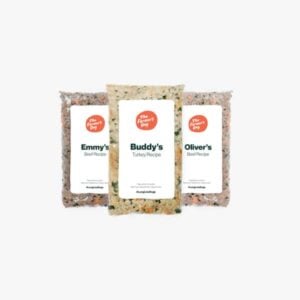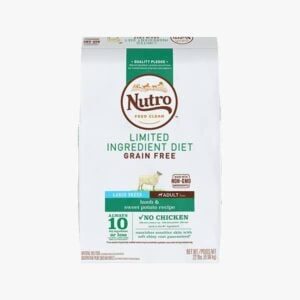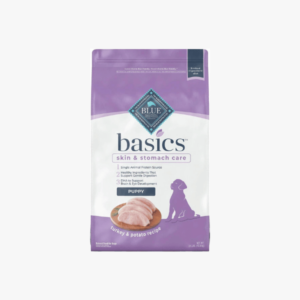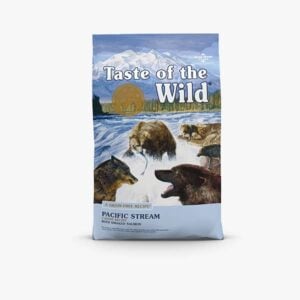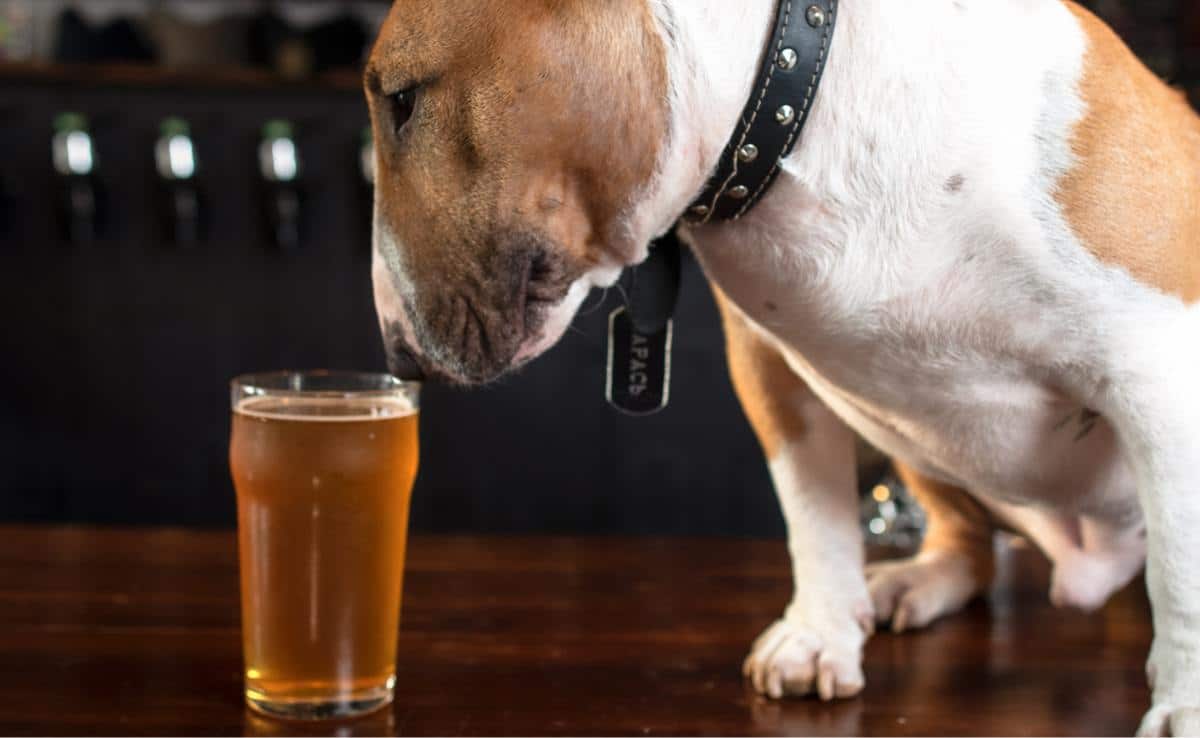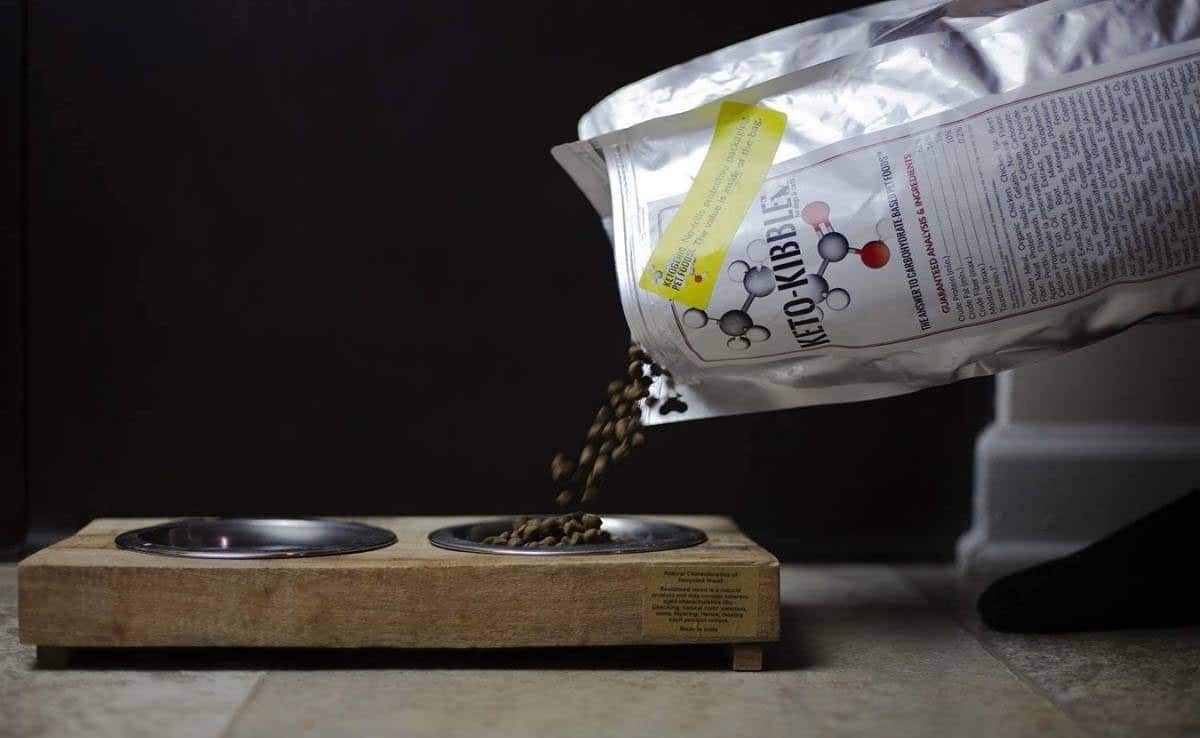Too Many Toots? Here’s What To Feed Your Gassy Dog Instead
When you purchase through links on our site, we may earn a commission. Here’s how it works.
Dog farts are funny until they aren’t. If your pup’s gas has gone from an occasional toot to a full-on room-clearing event, something in their diet may be to blame.
Table of Contents
Excessive flatulence can signal digestive upset, food sensitivities, or poor-quality ingredients. While some gas is normal, a sudden increase or persistent stink is often a sign that it’s time to reevaluate what’s in the bowl.
Up ahead, you’ll find the most common causes of doggy gas, how to choose food for gassy dogs, and which formulas other dog parents swear by to keep the air clear and the tail wagging.
| Best Overall | Budget Pick | For Puppies |
|---|---|---|
 | 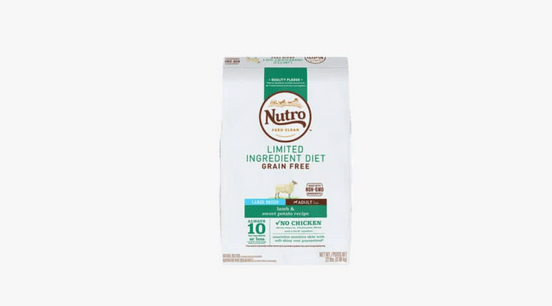 | 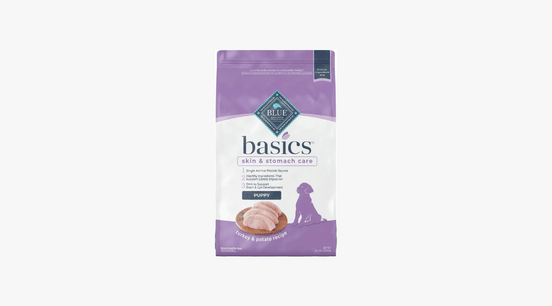 |
| The Farmer’s Dog | Nutro Limited Ingredient Grain-Free | Blue Buffalo Basics Skin & Stomach Care |
| View On The Farmer’s Dog | View On Amazon | View On Amazon |
| Read Review | Read Review | Read Review |
Why Is My Dog So Gassy?
Let’s be honest. You’re not going to stop the farts completely, and that’s okay.
All dogs pass gas. Some more often than others. Some more dramatically than others.
But if your pup’s toots have gone from occasional to out-of-control, there’s probably something deeper going on. Here are the most common reasons dogs get gassy and how to start narrowing down the cause.
Swallowing Too Much Air (Aerophagia)
This one might sound suspiciously like something your partner would claim, but it’s a real issue. Dogs that eat too fast often gulp air while scarfing down their meals. That air has to exit somewhere.
While this kind of gas isn’t usually smelly, aerophagia can still be disruptive, noisy, and painful for your dog. Try using a slow-feed bowl to slow your dog down at mealtime and reduce the amount of air swallowed.
Some breeds, like Bulldogs and Pugs, are especially prone to this because of their short snouts. These flat-faced dogs may struggle with traditional slow feeders, but puzzle feeders or spreading food out on a flat surface can help.

Just know that if you have a brachycephalic breed, a little extra gas comes with the territory.
Low-Quality Diet Or Too Many Table Scraps
You might be fueling the fumes if your dog’s diet includes bargain-brand kibble or lots of human food.
Lower-quality dog foods often rely on fillers and hard-to-digest ingredients that linger in the gut and ferment. That fermentation process is what causes the stink.
Human foods can also be tough for dogs to digest, especially if they’re fatty, processed, or full of seasoning. If your pup regularly gets greasy scraps or rich snacks, their digestive system could be working overtime.
Upgrading to better-quality food for gassy dogs can make a noticeable difference. It won’t just help reduce gas but can also improve energy levels, coat health, and digestion overall.
Too Much Protein (Especially Red Meat)
Protein is vital to your dog’s diet, but too much of it can cause issues, especially from red meat.
Meat contains sulfur and red meats like beef or lamb has higher levels than poultry or fish. As that sulfur breaks down, it releases the kind of gas you definitely notice.
If your dog is eating a high-protein food and seems especially gassy, try switching to a formula with a moderate protein level, around 25 percent. Consider choosing fish or poultry as the primary protein source instead of red meat.
Lactose Intolerance
Puppies are born with the ability to digest milk, but as they grow up, that ability fades.
Most adult dogs become lactose intolerant. When they eat dairy like milk, cheese, or yogurt, their bodies struggle to break it down, which leads to gas and sometimes loose stools.
Most high-quality food for gassy dogs avoid dairy ingredients, but double-checking the label is still smart. And resist the urge to share your cheese snack, even if they give you the eyes.
Underlying Health Issues
Sometimes, gas is a symptom of something more serious. Conditions like inflammatory bowel disease, parasites, pancreatitis, infections in the digestive tract, or even certain cancers can all cause excessive flatulence.
Other symptoms include vomiting, diarrhea, appetite changes, weight loss, or lethargy. If you notice any of these, schedule a vet visit right away.
Gut health plays a massive role in overall well-being. Around 80 percent of your dog’s immune system is influenced by the gut, so getting their digestion on track is not just about odor control. It’s about long-term health.
How To Choose The Right Food For A Gassy Dog
Not all dog foods are created with digestion in mind.
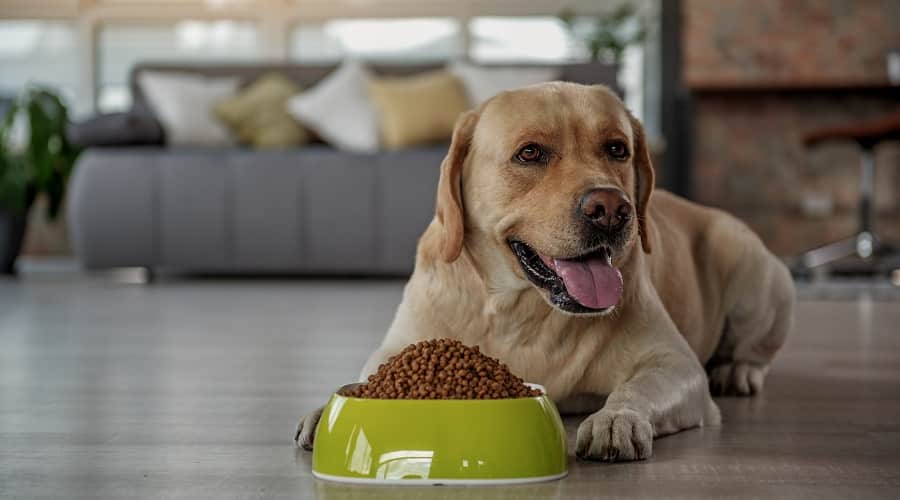
If your pup is dealing with chronic gas, switching to a food for gassy dogs can make a noticeable difference. That means looking beyond flashy packaging and marketing terms to understand what’s actually in the bag.
Some ingredients are known gas triggers. Others can help soothe sensitive stomachs and promote more efficient digestion.
The right combination of nutrients can reduce flatulence, improve stool quality, and leave your dog feeling better overall while also saving your nose.
Here’s what to look for when choosing the best dog food for gassy dogs.
Stick To Natural, High-Quality Ingredients
Start by reading the label closely.
High-quality dog food should list real, named meat like chicken, turkey, or salmon as the first ingredient. This tells you the food is built around a reliable source of protein rather than cheap fillers.
Avoid vague or generic terms like “meat meal,” “animal digest,” or “by-product meal,” which often indicate lower-quality ingredients that are harder to digest.
Artificial preservatives, colorings, and flavorings are also red flags. These additives can irritate your dog’s digestive system, especially if they already have a sensitive stomach.
Natural ingredients are easier for most dogs to process and are less likely to ferment in the gut in a way that causes excess gas.
Some lower-end foods rely on high-carb fillers like corn, wheat, or soy to bulk the product cheaply. These ingredients are difficult for many dogs to break down, often resulting in increased flatulence.
Choosing a natural, minimally processed dog food made with whole food ingredients can significantly improve digestion.
Even if your dog has no diagnosed allergy or sensitivity, poor-quality ingredients can still lead to ongoing digestive discomfort. Clean up the ingredient list, and you may find the air clears up right along with it.
Choose Limited-Ingredient Recipes
Limited-ingredient diets are an excellent option for dogs with unexplained gas.
These recipes focus on just a handful of key components, usually one protein, one carbohydrate, and a few added nutrients. This helps reduce the number of potential triggers in your dog’s bowl.
By simplifying your dog’s diet, spotting which ingredients might be causing problems becomes easier.
If your dog reacts poorly to a common protein like chicken or beef, switching to a novel protein like duck, venison, or salmon can make a big difference. Some dogs are also sensitive to certain starches or grains, which can be eliminated more easily with a pared-down formula.
Keep in mind that limited-ingredient does not always mean hypoallergenic, but it does make the process of identifying food intolerances more manageable. With fewer ingredients, it’s easier to experiment and track your dog’s response over time.
If you suspect a food intolerance but aren’t sure what’s causing it, limited-ingredient food is a smart place to start. It can be fed exclusively for a few weeks while you monitor for improvement, and then other foods can be slowly reintroduced if needed.
Prioritize Digestible Carbohydrates & Fiber
Carbohydrates are an important part of a balanced dog diet, but not all carbs are equally digestible.
Whole, gently cooked grains like brown rice or oatmeal and starchy vegetables like sweet potatoes or pumpkin tend to be much easier on the digestive system than corn, soy, or wheat.
Low-quality carbs can ferment in your dog’s intestines, leading to gas and bloating. Foods high in refined grains or filler ingredients are often the culprits behind foul-smelling flatulence.
Look for whole-food carbs that provide energy without overwhelming the gut.
Fiber also plays a role in how well your dog digests their food. The right type and amount of fiber can help regulate stool consistency and keep things moving smoothly.
Soluble fiber, found in ingredients like beet pulp or chicory root, feeds the good bacteria in the gut and supports a healthy microbiome.
That said, too much fiber or the wrong kind can make the problem worse.
High-fiber foods may be marketed as healthy, but they’re not always ideal for dogs with sensitive stomachs. A moderate level of fiber from digestible sources is best for reducing gas.
Look For Gut-Boosting Additions
Beyond protein and carbs, certain ingredients actively support digestive health. Prebiotics and probiotics are among the most important.
Prebiotics are plant fibers that feed the beneficial bacteria in your dog’s gut. Probiotics are live microorganisms that help maintain a healthy balance in the digestive tract.
When your dog’s gut microbiome is balanced, digestion improves and gas decreases.
Many high-quality dog foods now include probiotics such as Lactobacillus or Bifidobacterium, which can help reduce flatulence and improve nutrient absorption. These are especially helpful after a round of antibiotics or during food transitions.
Best Dog Food For Gassy Dogs (Reviewed & Ranked)
Finding the right food for your gassy pup can be trial and error.
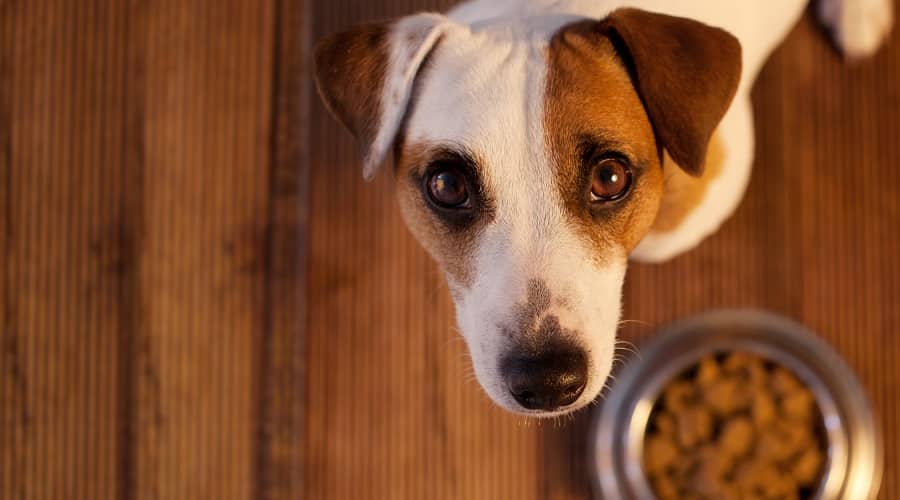
To help narrow it down, we’ve reviewed some of the best dog foods for flatulence. These picks are popular among pet parents dealing with smelly situations, and they’re formulated with ingredients that support better digestion.
Each option below is selected for a specific need, whether your dog has food sensitivities, a picky palate, or a sensitive stomach.
The Farmer’s Dog Review
If you want to feed your dog fresh, human-grade food tailored to their needs, The Farmer’s Dog is a strong choice.
Its vet-developed meals are made with whole ingredients like real meat, vegetables, and lentils, all gently cooked to preserve nutrients and improve digestibility.
The simple ingredient lists make it easier to spot potential triggers, and many dog owners report a noticeable drop in gas after switching. Because meals are delivered based on your dog’s age, weight, and activity level, portion control is also built in.
This is one of the pricier options on the list, but the freshness, transparency, and customization may be worth it if your dog’s digestion has been hard to manage with standard kibble.
Highlights
- Cooked fresh, flash-frozen, and shipped to you
- Personalized meal plans
- 4 healthy, vet-designed options: beef, chicken, turkey, or pork
- Made with human-grade ingredients (no fillers or preservatives)
- Calories and nutritional values vary based on recipe
Best food for: pet parents looking for a fresh food option for their gassy dog.
Nutro Limited Ingredient Diet Grain-Free Review
View on Amazon | View On Chewy
Nutro’s Limited Ingredient Diet is great for dogs with food sensitivities or allergies. It features a short list of ingredients, including a single protein source.
There are no corn, wheat, soy, dairy, or artificial preservatives. This clean formulation makes it a strong contender for dogs with sensitive digestion or frequent gas.
It’s also widely available and more affordable than some boutique allergy-friendly brands.
We love that this recipe is specifically designed for the nutritional needs of larger breeds while still maintaining the need for digestive support. It’s on par with other bigger brands when comparing costs.
Highlights
- Grain-free recipe
- Under 10 ingredients
- Made with non-GMO ingredients
- First ingredient is real lamb
- No by-products in any formula
- Great for sensitive stomachs
Best food for: gassy dogs with allergies.
Blue Buffalo Basics Skin & Stomach Care Review
View on Amazon | View On Chewy
This line from Blue Buffalo is specifically made for dogs with sensitive digestive systems. It features easily digestible proteins like turkey and gentle carbs like pumpkin, peas, and potatoes.
It also includes Blue Buffalo’s LifeSource Bits, which contain a mix of vitamins and antioxidants to support immune and digestive health. This formula is often recommended for dogs with food intolerances or chronic tummy troubles.
Puppy-specific options are also available, making it a good fit for dogs of all life stages.
Highlights
- Potatoes, peas, and pumpkin to support gentle digestion
- No chicken, beef, corn, wheat, soy, dairy, or eggs
- Great for puppies with food sensitivities
- Includes DHA and ARA to support cognitive and retinal development
- No artificial flavors or preservatives
Best food for: gassy dogs and puppies with sensitive stomachs.
Canidae Pure Raw Coated Review
View on Amazon | View On Chewy
Canidae PURE uses a short list of whole food ingredients, including premium proteins like salmon. Each piece of kibble is coated with raw, freeze-dried meat to enhance taste without adding digestive stress.
The grain-free formula includes omega fatty acids and probiotics for digestion and skin health. It’s ideal for picky eaters or dogs transitioning off raw diets but still needing something gentle.
Highlights
- Grain-free formula
- Limited ingredient recipe
- Salmon is the first ingredient
- Kibble is uniquely freeze-dried for taste
- Omega-3 and 6 for healthy skin and coat
- Includes probiotics
Best food for: gassy dogs that are also picky eaters.
Taste Of The Wild Pacific Stream Review
View on Amazon | View On Chewy
This fish-based formula is a solid alternative to red meat or poultry, especially for dogs sensitive to common proteins. It uses smoked salmon and ocean fish as primary ingredients, along with sweet potatoes and peas for digestibility.
The recipe includes a species-specific probiotic blend, antioxidants from real vegetables, and omega fatty acids to support digestive and skin health. It’s flavorful, nutrient-rich, and widely trusted by pet parents of sensitive dogs.
Highlights
- Grain-free formula
- Antioxidants from real vegetables
- Fatty acids for skin and coat health
- No grain, corn, wheat, or fillers
Best food for: gassy dogs who don’t tolerate red meat or poultry.
Bonus Tips To Help Stop The Stink
Switching your dog’s food is a great first step, but a few other strategies can help cut down on the gas and improve digestion even further. These simple changes can support gut health, reduce air gulping, and give your dog’s system time to adjust.
Use A Slow Feeder Bowl
If your dog eats like they’re in a speed-eating contest, they’re probably swallowing air along with their food. That extra air has to escape somehow, and it usually does.

Slow-feed bowls are designed with ridges or puzzle patterns that force your dog to take smaller bites and chew more.
Not only can this reduce gas, but it can also help prevent bloating and encourage better digestion overall.
If your dog is flat-faced or struggles with standard slow feeders, try spreading the food out on a muffin tin or a flat surface to slow them down naturally.
Stick To A Regular Feeding Schedule
Feeding your dog at the same time each day helps regulate their digestive system. It gives their body a predictable rhythm, which can reduce digestive upset.
Grazing or inconsistent feeding times can lead to overeating, gulping, or food fermenting in the gut, all contributing to gas.
Try feeding smaller portions twice a day rather than one large meal. This reduces the load on your dog’s digestive tract and helps prevent gas from building up.
Transition New Foods Slowly
If you’re switching to a new dog food, don’t do it overnight. Sudden diet changes are one of the biggest causes of temporary digestive issues, including gas, bloating, and diarrhea.
Start by mixing a small amount of the new food with your dog’s current food, increasing the proportion of new food gradually over 7 to 10 days. A gentle transition gives your dog’s gut time to adjust and makes it easier to spot any sensitivities.
Know When To Call The Vet
If your dog’s gas is persistent, painful, or accompanied by other symptoms like vomiting, diarrhea, lethargy, or changes in appetite, it’s time to check in with your vet. Excessive flatulence could signify a larger digestive issue, food allergy, or even an infection.
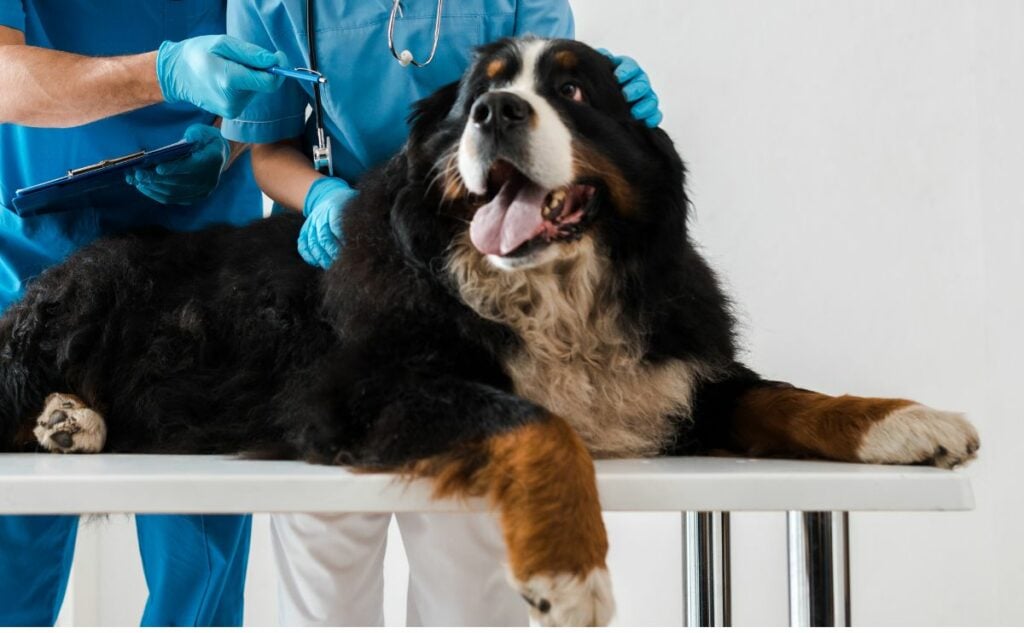
Even if it turns out to be nothing serious, it’s worth getting professional guidance to rule out anything more serious and get tailored recommendations for your dog’s health needs.
Frequently Asked Questions
Still got questions about dog gas? You’re not alone.
Here are some of the most common things pet parents want to know when their dog turns into a walking whoopee cushion. Don’t see yours? Ask us in the comments!
Is Being Gassy A Serious Health Issue?
Only your vet can answer this question, but generally speaking, not having gas as a dog isn’t harmful at all. In fact, most dogs pass gas just like humans, but the smell factor is what mostly depends on their diet.
You may consider a pea or lentil-free dog food if that seems to bother your pup.
Should My Dog Be On Medication?
Typically no, but this is a good question for your vet because every dog’s situation is going to be different.
Does Eating Grass Cause Gas In Dogs?
It can yes. Your dog might eat grass for a number of reasons too, so it’s important to consult with a vet if this is happening frequently.
Will Probiotics Give My Dog Gas?
It can possibly, yes. It will usually stop after your dog gets used to having probiotics in their food.
Will Pumpkins, Carrots, Or Other Vegetables Give My Dog Gas?
If it’s the first time introducing these foods into their diet, yes, it’s likely that your dog’s stomach may get a little gassy. This is completely normal and nothing to be concerned about unless it happens continuously.
A Less Gassy Life Awaits
Living with a gassy dog doesn’t have to mean living in fear of sudden stink bombs. Most can enjoy more comfortable digestion with the right food for gassy dogs, better feeding habits, and a little trial and error.
If you’re interested in digging deeper, explore our guide to dog gut health to understand why the digestive system plays such a significant role in overall wellness. You can also check out our top picks for the best kibble for dogs with sensitive stomachs if you seek more gentle options. And if your dog’s symptoms are more serious or persistent, learn the signs of inflammatory bowel disease in dogs and when it’s time to call the vet.
